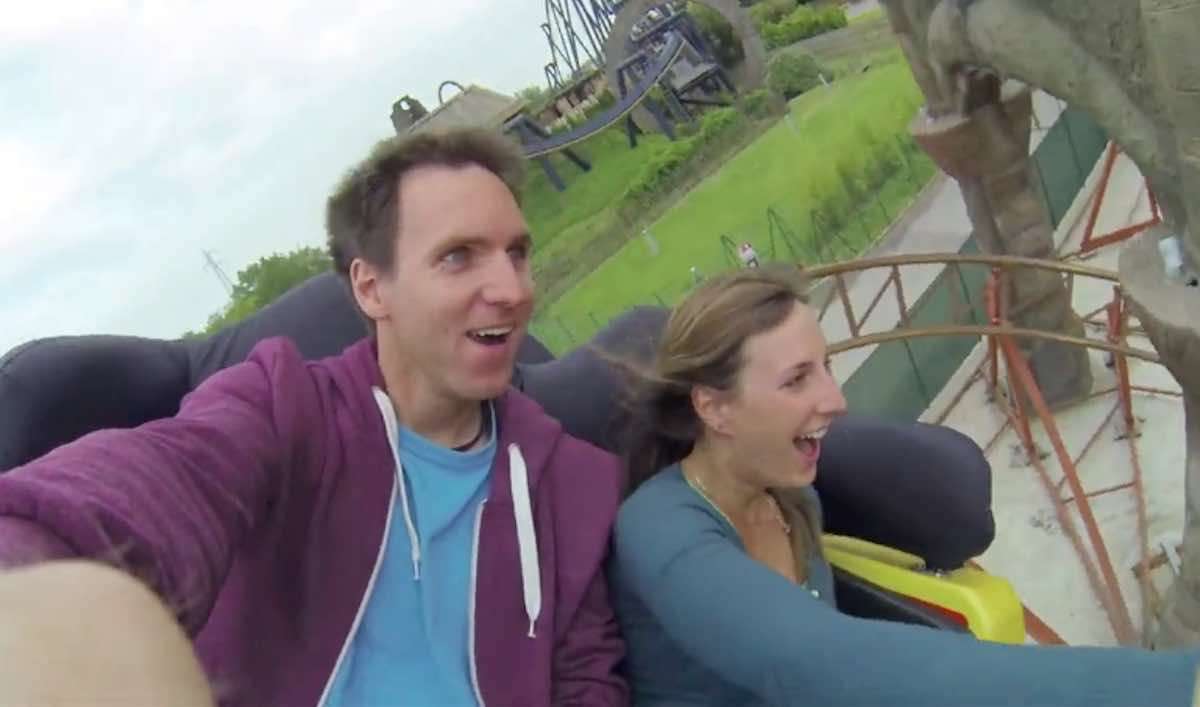Google Creates New AI That Can Outperform Doctors in Diagnosing Most Commonly Lethal Form of Cancer
This new deep learning system was able to outperform doctors in diagnosing one of the most commonly fatal forms of cancer in the US.

Are you struggling with a kidney stone? This study says that you can dislodge them by riding a rollercoaster – and the research just won the Ig Nobel Prize for Medicine.
The Ig Nobel Prize is a spoof award for amusing – but still real – scientific research. All the studies that are given awards are published in peer-reviewed scientific journals, but they all live within the realm of strange and improbable research.
This year, a Michigan State University professor received the prize for discovering that riding a roller coaster helps patients pass kidney stones with nearly a 70% success rate.
David Wartinger, a professor emeritus in the Department of Osteopathic Surgical Specialties, led both a pilot study and an expanded study to assess whether the stories he was hearing from patients were true.
His pilot study is published in the Journal of the American Osteopathic Association.
"Basically, I had patients telling me that after riding a particular roller coaster at Walt Disney World, they were able to pass their kidney stone," Wartinger said. "I even had one patient say he passed three different stones after riding multiple times."
This resulted in Wartinger going out and testing the theory. Using a validated, synthetic 3D model of a hollow kidney complete with three kidney stones no larger than 4 millimeters inserted into the replica, he took the model in a backpack on Big Thunder Mountain at the theme park 20 times. His initial results verified patient reports.
"In the pilot study, sitting in the last car of the roller coaster showed about a 64 percent passage rate, while sitting in the first few cars only had a 16 percent success rate," Wartinger said.
The expanded study, conducted with Mark Mitchell, an MSU resident at the time, included riding the same roller coaster with multiple kidney models attached to the researchers. They discovered even better results while sitting in the back of the coaster, with a passage rate of nearly 70%. They also found that both studies showed a 100 percent passage rate if the stones were located in the upper chamber of the kidney.
"In all, we used 174 kidney stones of varying shapes, sizes and weights to see if each model worked on the same ride and on two other roller coasters," Wartinger said. "Big Thunder Mountain was the only one that worked. We tried Space Mountain and Aerosmith's Rock ‘n' Roller Coaster and both failed."
Wartinger went on to explain that these other rides are too fast and too violent with a G-force that pins the stone into the kidney and doesn't allow it to pass.
"The ideal coaster is rough and quick with some twists and turns, but no upside down or inverted movements," he said.
It's estimated that around 300,000 people per year go to an emergency room suffering from kidney stones and the cost for treatment could range anywhere between $5,000 to $10,000.
Lithotripsy, which breaks apart kidney stones that are too large to pass, is a common treatment for the problem. Wartinger said the procedure is usually used in cases where the kidney stone is larger than 5 millimeters.
"The problem though is lithotripsy can leave remnants in the kidney which can result in another stone," Wartinger said. "The best way to potentially eliminate this from happening is to try going on a roller coaster after a treatment when the remnants are still small."
He added that patients could even try going on a coaster once a year as maintenance, lessening the chances of future issues and minimizing health care costs.
"You need to heed the warnings before going on a roller coaster," he advised. "If you have a kidney stone, but are otherwise healthy and meet the requirements of the ride, patients should try it. It's definitely a lower-cost alternative to health care."
Reprinted from Michigan State University
(WATCH the video below)
Cure Your Friends Of Negativity And Share The Good News To Social Media
Be the first to comment